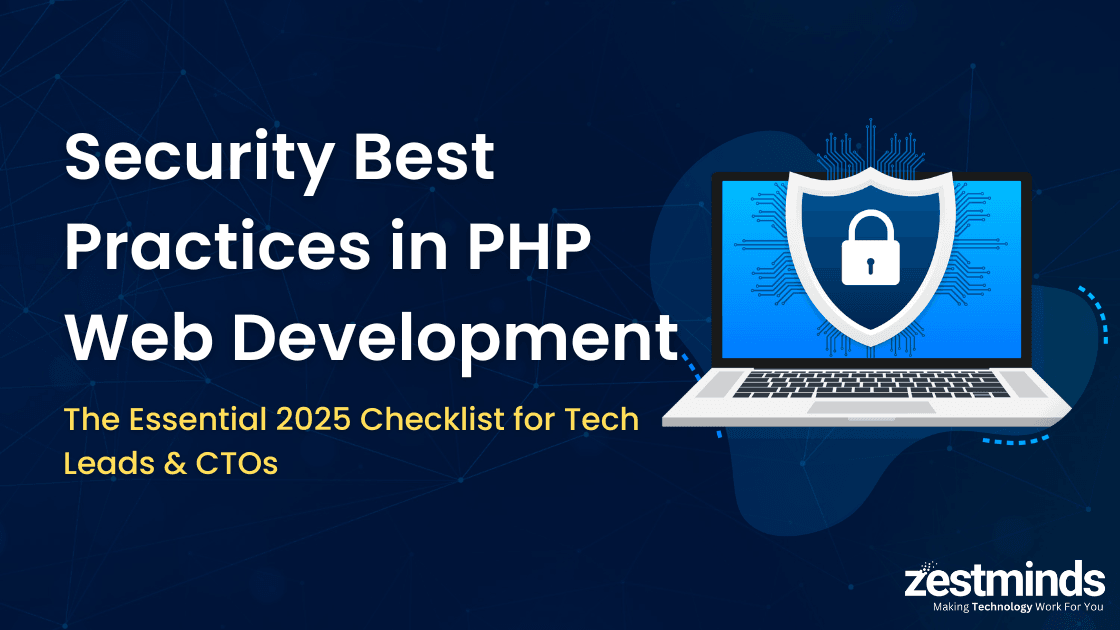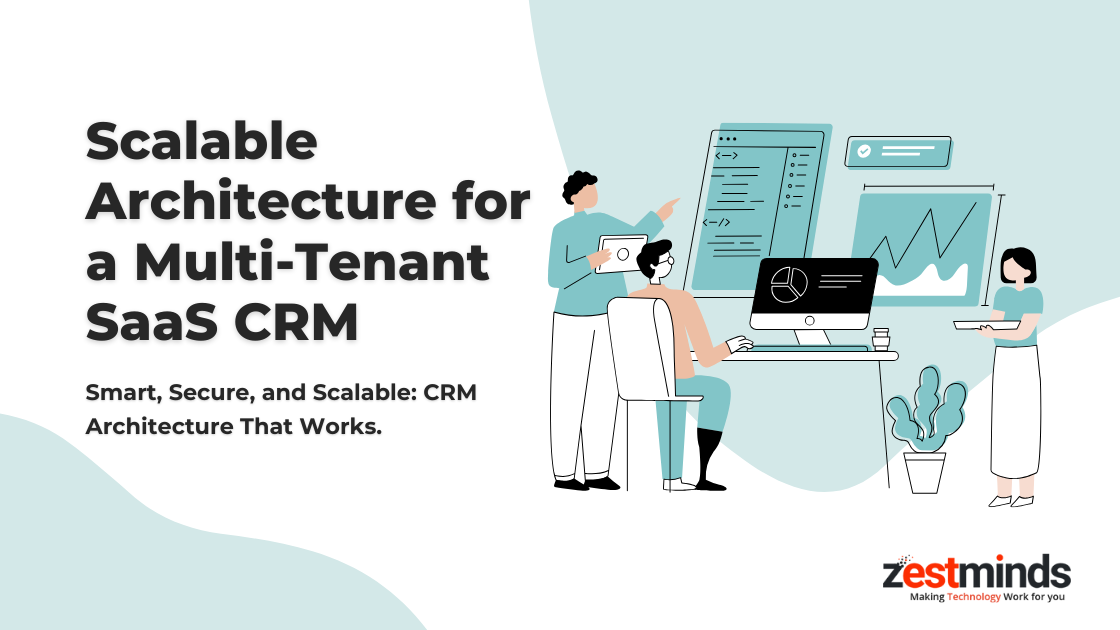What Makes a Web Application Successful in 2025?
Success in web applications is being redefined in 2025. It’s no longer about just speed or looks—it’s about AI readiness, compliance, real-time intelligence, and scalability. Whether you're in the US, UK, Canada, Australia, or Germany, the new benchmark is clear: if your app doesn’t think, adapt, and deliver from day one, you’re already behind. In this guide, we break down what truly makes a web app successful today—backed by real tech trends and industry use cases.
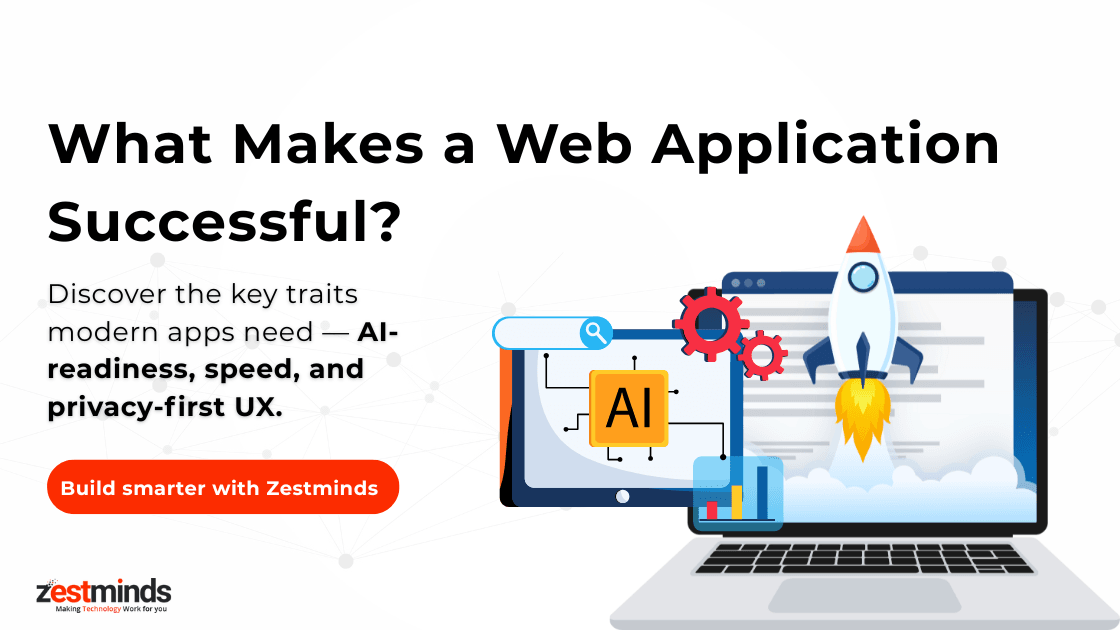
Planning to launch or upgrade your web app in 2025? Here's what top-performing apps are doing right.
Why the Definition of 'Successful Web App' Has Changed
Let's go back 10 years. A successful web app in 2015? Just make it mobile-friendly, don't crash, and boom — you're golden.
Fast forward to 2025, and things have changed. Drastically.
Today, a successful web application must be smart, fast, secure, scalable, user-obsessed, and AI-ready from Day 1.
Success isn't just about building something that works. It's about building something that learns, adapts, respects privacy, and evolves with user needs.
"Software is eating the world, but AI is chewing faster." — Unknown Developer on Reddit
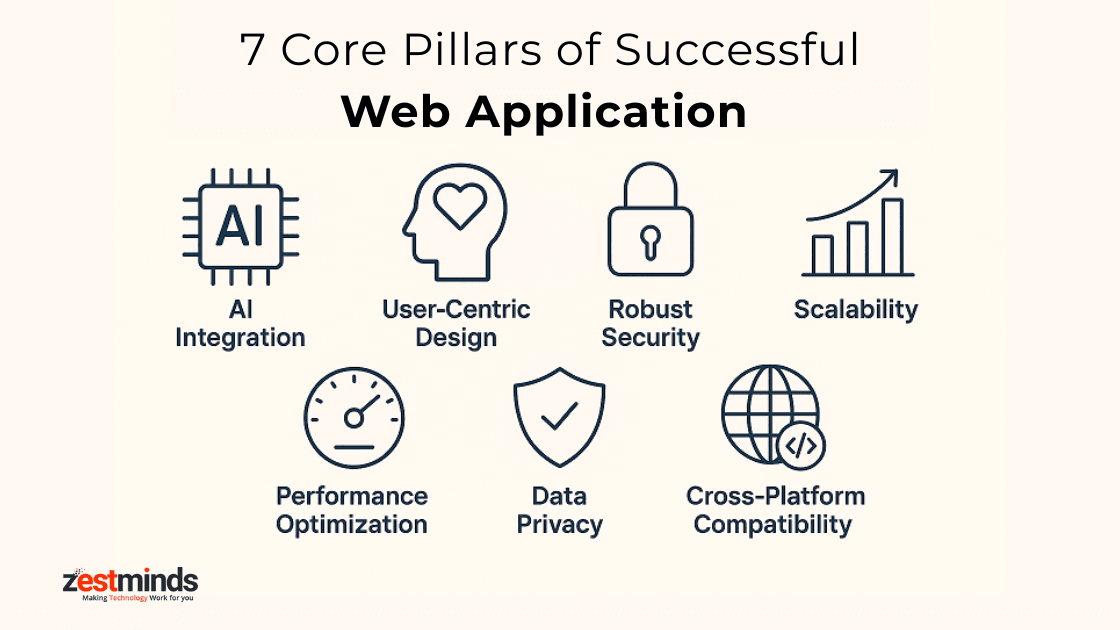
Core Pillars of a Successful Web App in 2025
1. AI-Readiness is No Longer Optional
AI has become the silent partner in every successful product today, especially in the rise of AI-ready web applications.
From auto-generating emails to dynamically adjusting pricing, AI is baked into the backbone of modern applications.
Want to build a recommendation engine? Don't wait.
Need customer support? Use LLM-powered chat.
User drop-offs? AI can detect and alert you.
Real-world example:
An eCommerce app integrated OpenAI + vector search (Weaviate) to build a smart search system. Result? 24% increase in conversions.
Learn more about Weaviate and OpenAI for vector search in Fintech.
Don't just be AI-compatible. Be AI-native.
2. Lightning-Fast UX with Edge and CDN-first Thinking
Speed still kills… in a good way.
Users today expect apps to load in under 2 seconds. Google reports that even a 1-second delay can drop conversions by 20%.
Quick Wins:
- Server-side rendering (SSR)
- Lazy loading images/components
- CDN-first deployment (Cloudflare, Fastly, Netlify)
- Compress everything
Think of speed as your app's first impression. And first impressions in 2025? Brutally short.
3. Scalable, Modular MVPs Over Big Bang Launches
Gone are the days of launching massive v1.0s.
Startups and enterprises alike now swear by modular MVPs:
- Build only the must-have features.
- Launch fast.
- Measure.
- Iterate.
Want to build a calendar app? Start with booking, not color themes.
Zestminds Tip:
Design each module like a plug-and-play unit. Makes scaling smoother and lets devs work in parallel.
This approach is best visualized using a modular architecture, where every core component of the MVP stands alone — yet works together through the core logic layer.
Below is an example layout of how scalable web application components are structured in a typical MVP:
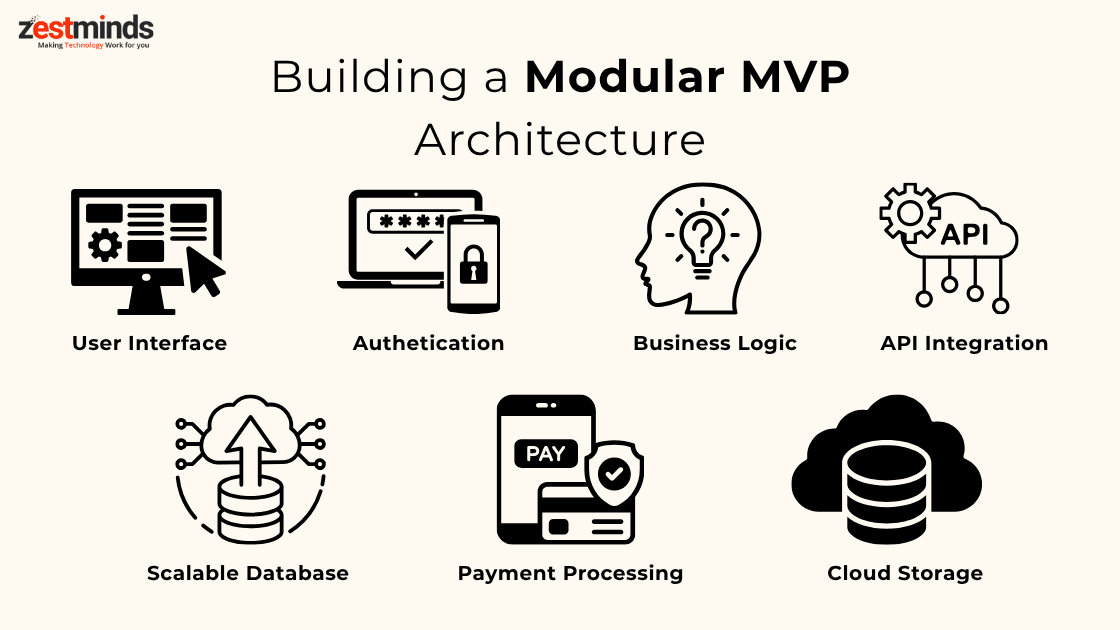
We follow this modular MVP approach in every project – like in this Easy Marketing App Case Study.
4. Privacy + Compliance Built-In
In 2025, one CCPA or GDPR slip-up can wreck your brand.
Privacy is no longer an afterthought. It's table stakes.
Must-haves:
- Consent management (cookie banners)
- Clear privacy policies (auto-generated and tailored)
- Local storage over cookies where needed
- Encrypt everything. Twice.
Bonus: AI-based privacy assistants are now a thing. They scan your app regularly for compliance risks.
Explore how we built HIPAA-compliant AI hospital software to meet security-first requirements.
5. API-First Integrations & No-Code Friendly
Your app isn't an island. It needs to talk to others.
Users expect:
- CRM integration
- Slack notifications
- Google Sheet exports
- Payment gateways
API-first = design your backend like it's meant to be used externally.
No-code friendliness = open the door to Zapier, n8n, Make, and other tools.
Check out how we leverage this in AI-powered automation with custom GPT apps.
6. Real-Time Analytics & Feedback Loops
"How do we know it's working?"
You can't optimize what you can't see.
Add real-time feedback and analytics early:
- PostHog for product analytics
- Plausible or Mixpanel for traffic + conversion
- In-app feedback widgets
Loop the data back into your roadmap. This isn't just for growth teams — it's for survival.
7. Mobile-First + Accessibility-First Mindset
More than 70% of users are mobile-first.
And if your app isn't accessible? You're leaving millions behind.
Checklist:
- Progressive Web App (PWA) setup
- Responsive UI on all breakpoints
- Use alt-text, screen-reader tags
- Avoid color-only cues (color blindness is real)
Accessibility isn't charity. It's ROI.
"Technology is best when it brings people together." — Matt Mullenweg, WordPress Founder
How AI Is Reshaping Web App Success in 2025
AI isn't just a feature. It's the fabric.
Here's a visual breakdown of how artificial intelligence powers modern web applications across multiple layers of functionality:
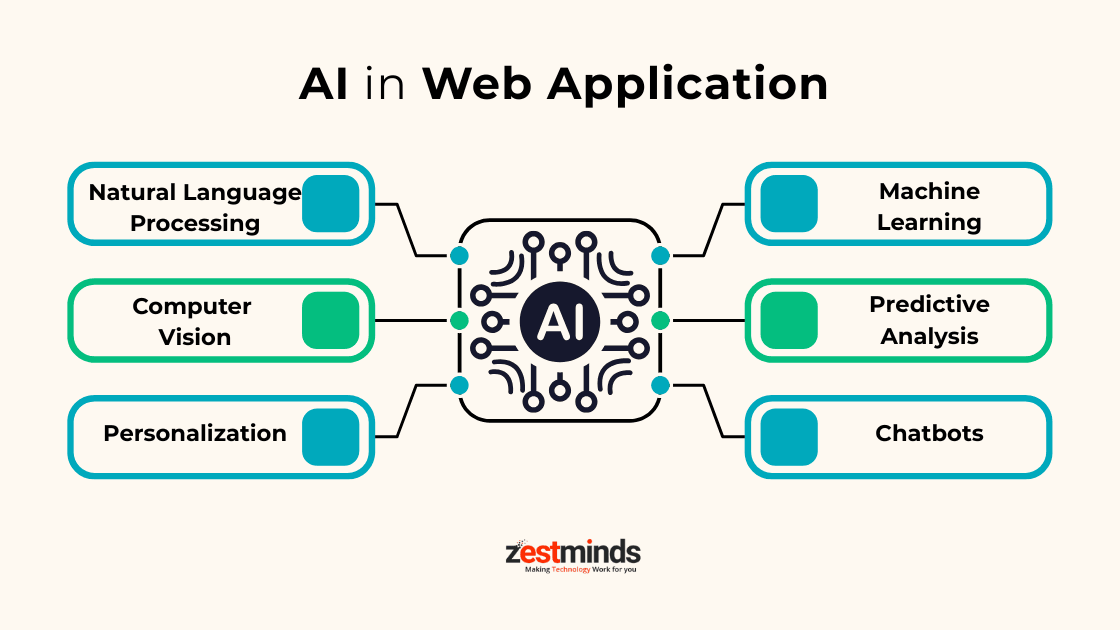
This AI mind map illustrates the core capabilities embedded in modern web applications — making them more intelligent, adaptive, and user-centric.
Here's how smart teams are weaving AI into their apps:
A. Personalization on Steroids
- AI learns user behavior and adjusts UI/UX in real time.
- Show different dashboards to a designer vs. a developer.
B. Intelligent Assistants Embedded in UX
- In-app copilots (e.g. Notion AI, Canva Magic)
- Auto-suggest content, decisions, or actions
C. Predictive + Prescriptive Analytics
- Know what users will do next
- Suggest actions that reduce churn or boost usage
D. Generative UX
- Auto-generate onboarding flows, emails, documentation
- Let users describe what they want and AI builds a draft
E. Voice, Vision & Natural Interfaces
- Add voice commands for navigation
- OCR and image classification for asset uploads
Dive deeper into generative AI applications and how they're reshaping user interfaces.
The bottom line? AI isn't magic. But it's mandatory.
Common Mistakes to Avoid in 2025 Web App Development
Let's call out the goof-ups before you commit them:
- Overengineering v1.0
You don't need Kubernetes for your weekend project - Ignoring AI completely
AI can save months of effort. Use it smartly. - Weak UX research
Building for yourself, not for users - No clear data strategy
What data do you need? Where does it live? Who owns it? - Not planning for scale
Build like 10 people will use it today, 10,000 tomorrow - Privacy as an afterthought
Retroactive compliance is painful (and expensive)
The Zestminds Way: Building Future-Ready MVPs
At Zestminds, we don't build websites. We build digital products that last.
Our approach:
- AI-first thinking from Day 1
- Modular MVPs that scale
- Compliant by default (GDPR, HIPAA, CCPA)
- Real-world dev experience
We've helped startups launch viral AI tools, healthcare platforms, and compliance engines. Check our AI development services for more.
Launch Smarter. Build Faster. Scale Without Limits.
Partner with Zestminds to build AI-ready, scalable MVPs — fast, secure, and built to win.
Book a Free Consultation
Conclusion
Web applications in 2025 need more than great code. They need:
- Speed
- Scalability
- Privacy
- AI-Readiness
- User empathy
If you're building in 2025, build smart. Build lean. And build for humans first.
FAQs
Q1: What makes a web application successful today?
A: Success means speed, scalability, privacy compliance, and AI-readiness.
Q2: Do I need AI in my MVP from Day 1?
A: Not always, but your architecture should be ready for AI integration.
Q3: What tech stack is best in 2025?
A: Depends on your use case, but modern stacks include React + Node/Next + vector DBs + OpenAI APIs.
Q4: How important is mobile optimization?
A: Extremely. Mobile-first is a default now, not an option.
Q5: How can I check if my app is compliant with laws like GDPR?
A: Use AI-based compliance checkers or consult with experts.
Q6: Is it safe to use no-code tools for critical workflows?
A: For MVPs and early stages — yes. Just keep a plan to migrate later.
Q7: How long does it take to build a good MVP?
A: With the right team, 4–6 weeks. Depends on scope and integrations.
Q8: Should I focus more on UI or backend in v1?
A: Get the backend right, but your UI is what users fall in love with.
Q9: What's the biggest mistake to avoid in 2025?
A: Building without AI in mind.
Q10: Can Zestminds help us build a web app with AI built-in?
A: Yes! We specialize in AI-native web app development. Let's talk.

Shivam Sharma
About the Author
With over 13 years of experience in software development, I am the Founder, Director, and CTO of Zestminds, an IT agency specializing in custom software solutions, AI innovation, and digital transformation. I lead a team of skilled engineers, helping businesses streamline processes, optimize performance, and achieve growth through scalable web and mobile applications, AI integration, and automation.
Stay Ahead with Expert Insights & Trends
Explore industry trends, expert analysis, and actionable strategies to drive success in AI, software development, and digital transformation.
